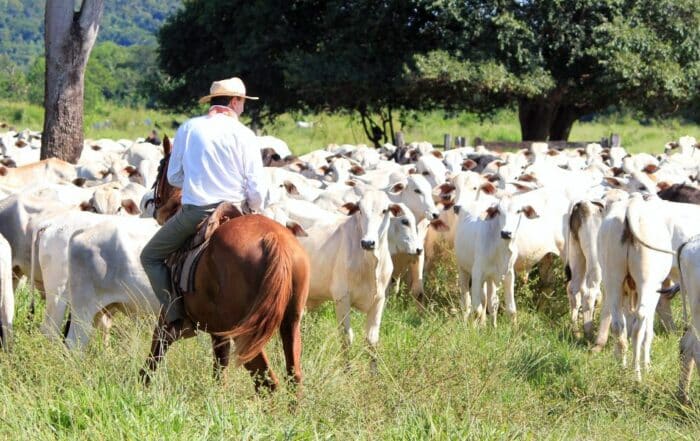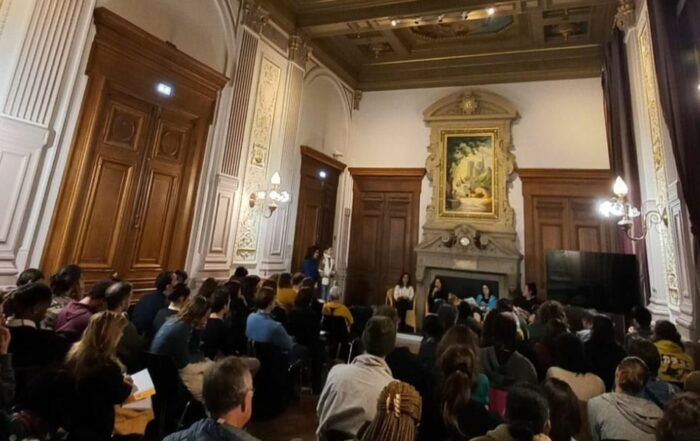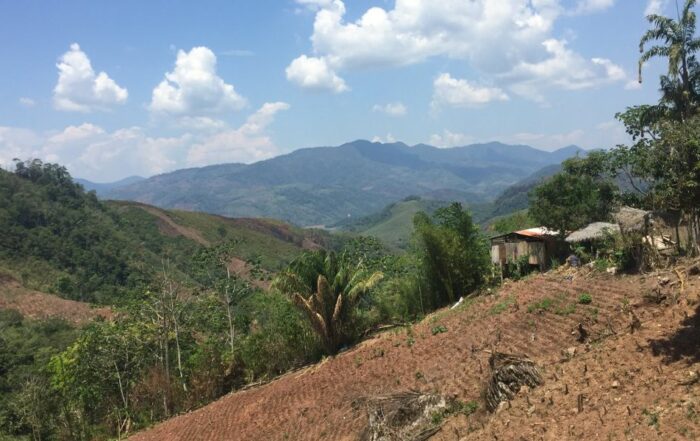Representatives from each of the four member communities of the Envol Vert foundation working on conservation and reforestation project got together in June 2019. This was the second exchange between these four communities. This time the host was the community from Ovejas in the department of Sucre.
The Guaimaro, an ancestral tree
The Guaimaro was the main theme of this meeting. This tree has gained prominence in environmental conservation and food security. Its advantages and its possibilities of use in cooking were revealed by ASOCALIM members: during a cooking workshop they prepared delicious recipes while explaining their preparation tips to representatives from other communities. Valuable knowledge and techniques on the transformation of Guaimaro have been exchanged.
Around the wood stove Mr Tomas, a representative of the community of Los Limites, explains how grilled flour made from Guaimaro is prepared and the process of preservation. His technique highlights the flavours of Guaimaro flour. The grilled aromas add a delicious perfume to the recipe. Some participants had never tasted this concoction, despite the presence of the product on their territory. Others remembered their parents preparing rice with Guaimaro and share their memories. Curiosity was aroused and everyone approached the stove to smell the aromas. Numerous questions were asked and Mr Tomas shares his knowledge of harvesting, drying, and the transformation process.
The culinary role in the conservation …
With “magic” qualities
There are multiple benefits of Guaimaro seeds. They have a high content in protein, calcium, iron and other nutrients which supplement the family’s diet, especially the children. Their rich nutritional composition makes them a very attractive food for domestic and wild animals. Sometimes some roasted seeds fall on the floor, dogs and hens are immediately attracted and the seeds are gone in no time!
With the grilled Guaimaro flour can be prepared infusion similar to coffee. The Perijá community thinks that the drink should be stronger, more concentrated to improve its intensity. Gradually people get use to the sweet and slightly chocolate savour. Then to continue this culinary experience, the women of ASOCALIM distributed cocadas, natilla and cakes all prepared with Guaimaro.
The Guaimaro seed is also eaten cooked and can be ground to make dough. During the second stage of the cooking work-shop the women seduced the participants with their recipes of empanadas and bollos (rolls) that everyone could enjoy. Food is an effective way to enjoy this marvellous tree. Its plantation and conservation are encouraged by the integration of its use in the culinary traditions of communities.
The community of ASOCALIM develops products made from Guaimaro and is supported by Envol Vert on the commercial management part. The association is an example for the other communities. Among the participants aroused the wish to set up a process of product transformation in their own community to create an alternative economy thanks to the endemic tree of the dry forest.
Also read: El primer intercambio entre proyectos sobre bio-insumos
Representatives from each of the four member communities of the Envol Vert foundation working on conservation and reforestation project got together in June 2019. This was the second exchange between these four communities. This time the host was the community from Ovejas in the department of Sucre.
The Guaimaro, an ancestral tree
The Guaimaro was the main theme of this meeting. This tree has gained prominence in environmental conservation and food security. Its advantages and its possibilities of use in cooking were revealed by ASOCALIM members: during a cooking workshop they prepared delicious recipes while explaining their preparation tips to representatives from other communities. Valuable knowledge and techniques on the transformation of Guaimaro have been exchanged.
Around the wood stove Mr Tomas, a representative of the community of Los Limites, explains how grilled flour made from Guaimaro is prepared and the process of preservation. His technique highlights the flavours of Guaimaro flour. The grilled aromas add a delicious perfume to the recipe. Some participants had never tasted this concoction, despite the presence of the product on their territory. Others remembered their parents preparing rice with Guaimaro and share their memories. Curiosity was aroused and everyone approached the stove to smell the aromas. Numerous questions were asked and Mr Tomas shares his knowledge of harvesting, drying, and the transformation process.
The culinary role in the conservation …
With “magic” qualities
There are multiple benefits of Guaimaro seeds. They have a high content in protein, calcium, iron and other nutrients which supplement the family’s diet, especially the children. Their rich nutritional composition makes them a very attractive food for domestic and wild animals. Sometimes some roasted seeds fall on the floor, dogs and hens are immediately attracted and the seeds are gone in no time!
With the grilled Guaimaro flour can be prepared infusion similar to coffee. The Perijá community thinks that the drink should be stronger, more concentrated to improve its intensity. Gradually people get use to the sweet and slightly chocolate savour. Then to continue this culinary experience, the women of ASOCALIM distributed cocadas, natilla and cakes all prepared with Guaimaro.
The Guaimaro seed is also eaten cooked and can be ground to make dough. During the second stage of the cooking work-shop the women seduced the participants with their recipes of empanadas and bollos (rolls) that everyone could enjoy. Food is an effective way to enjoy this marvellous tree. Its plantation and conservation are encouraged by the integration of its use in the culinary traditions of communities.
The community of ASOCALIM develops products made from Guaimaro and is supported by Envol Vert on the commercial management part. The association is an example for the other communities. Among the participants aroused the wish to set up a process of product transformation in their own community to create an alternative economy thanks to the endemic tree of the dry forest.
Also read: El primer intercambio entre proyectos sobre bio-insumos





